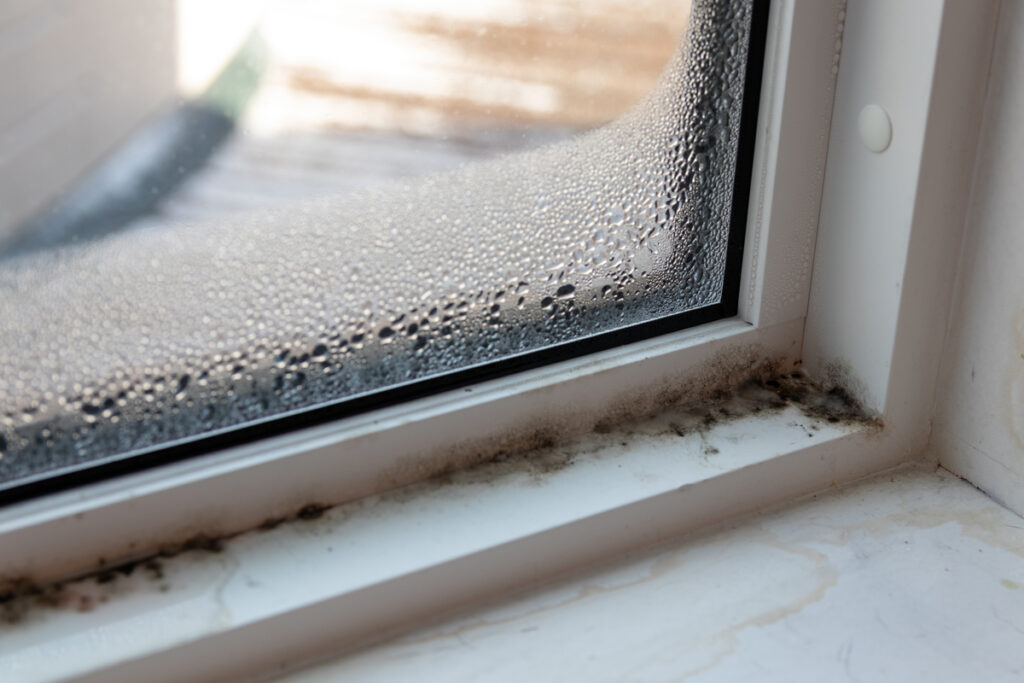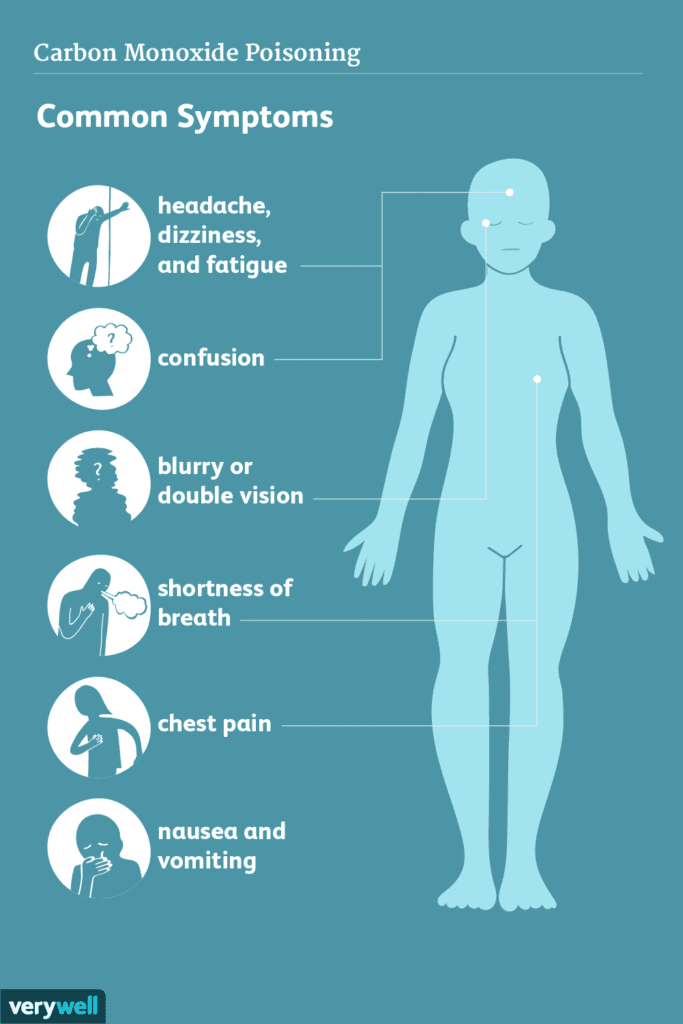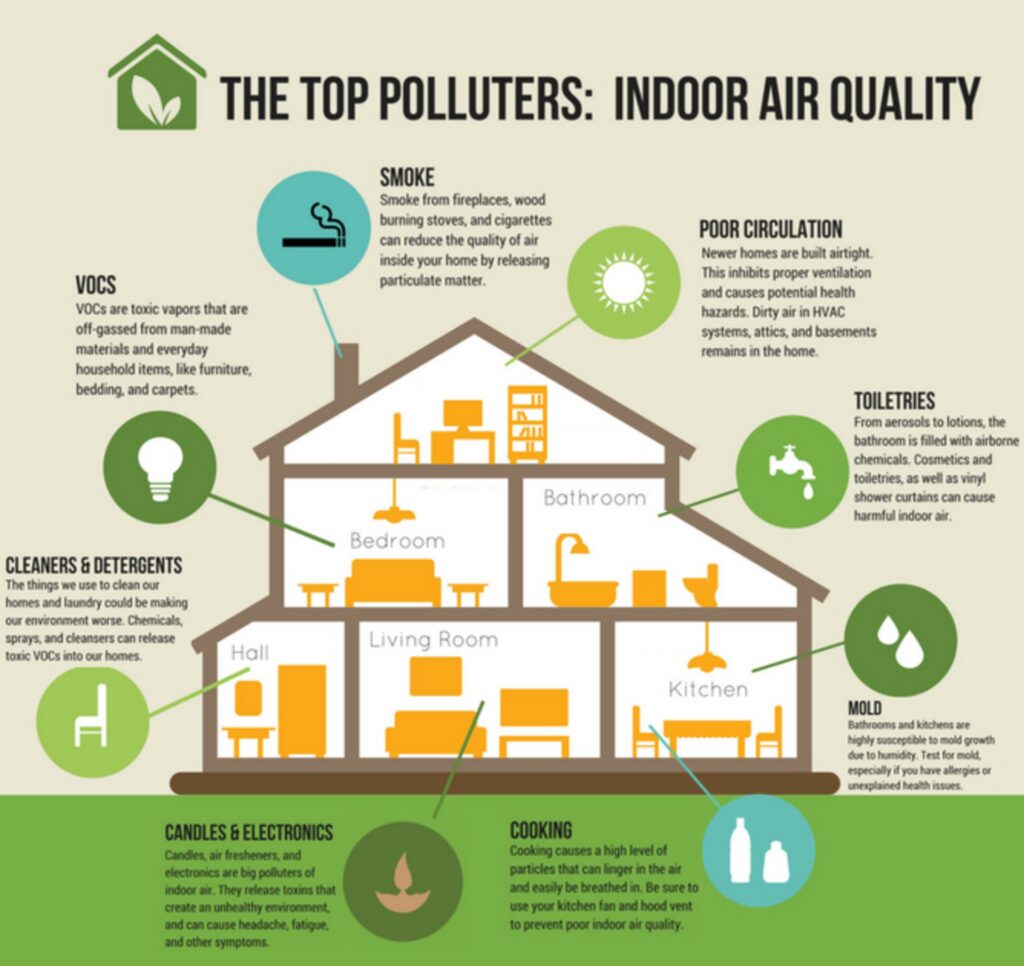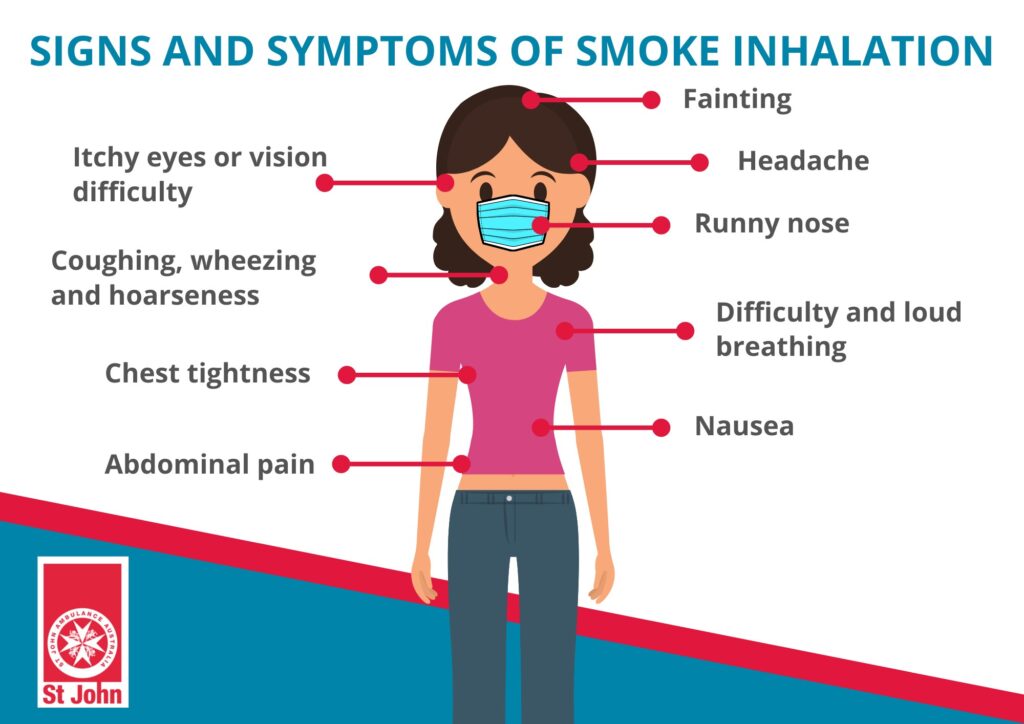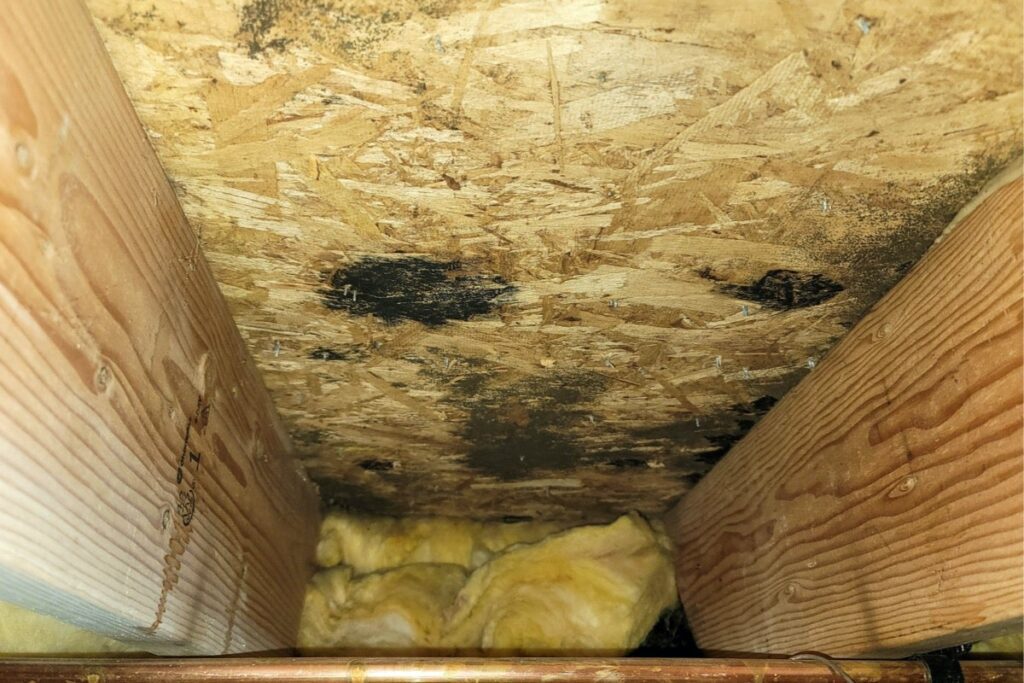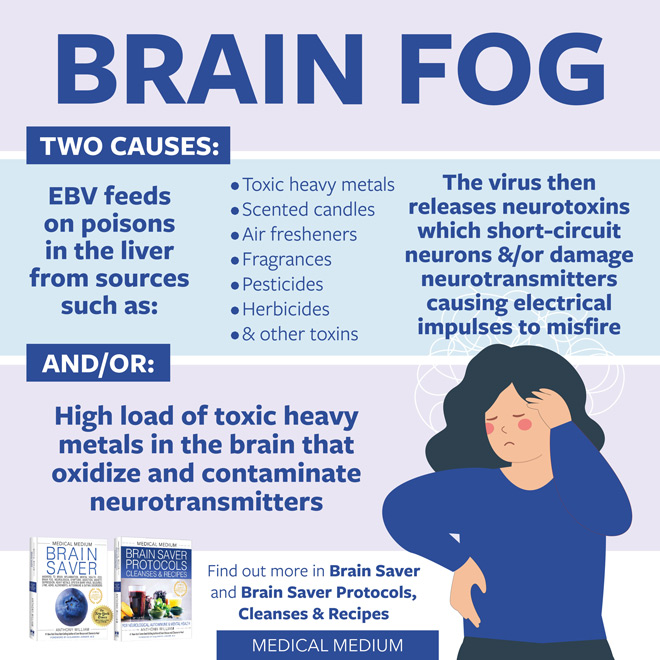Have you ever wondered about the air you breathe and how it can impact your health? With air pollution concerns on the rise, it’s essential to understand the basics of air quality and how it can affect you.
The air quality index is used to measure the quality of the air around you. It takes into account several factors, such as the levels of pollutants like ozone, carbon monoxide, and particulate matter. Poor air quality can lead to numerous health risks from air pollution, including respiratory and cardiovascular problems, among others.
To evaluate air quality, there are various methods, including air quality monitoring systems that measure different pollutants’ levels. Indoor air quality is equally important, given that we spend most of our time indoors. It’s worth understanding how to measure the quality of the air inside your home or office to safeguard your health.
Public health officials and regulatory bodies have established air quality standards to guide policy and decision-making. However, given the many sources of air pollution, it’s crucial to raise awareness, advocate for clean air, and take personal actions to reduce pollution.
Key Takeaways
- Air quality index measures the quality of the air you breathe and considers multiple pollutants.
- Poor air quality can lead to health risks from air pollution, including respiratory and cardiovascular problems.
- Measuring air quality through monitoring systems can aid in evaluating air quality standards.
- Indoor air quality is equally vital for protecting your health.
- Raising awareness and advocate for clean air can drive positive change and reduce pollution.
Understanding Air Quality: The Basics
Have you ever heard someone mention the air quality index and wondered what it meant? Or, have you ever wondered how air quality is measured? Understanding air quality and the factors that influence it is essential for protecting your health and the environment.
The air quality index (AQI) is a scale used to measure the quality of outdoor air. It is based on several factors, including particulate matter, ozone, nitrogen dioxide, and sulfur dioxide. The AQI ranges from 0 to 500, with higher values indicating poor air quality and increased health risks.
Air quality standards are established by governmental organizations and regulatory bodies to ensure that air pollution levels are safe for human health and the environment. These standards are based on scientific research and are continually updated to reflect new findings.
To measure air quality, air monitoring systems are used. These systems can be stationary or portable and measure air quality in real-time. Various types of air pollutants are measured using sophisticated sensors and analytical techniques.


How is Air Quality Measured?
Air quality is measured using specialized equipment that detects and quantifies various air pollutants, including particulate matter, ozone, and nitrogen dioxide. Stationary monitors, such as those found at air quality monitoring stations, are typically used to measure outdoor air quality. These monitors are often located near highways, industrial areas, and other sources of air pollution.
Portable monitors, on the other hand, can be used to measure air quality both indoors and outdoors. These monitors are small and lightweight and can be worn or carried in a backpack. They are useful for detecting air pollution in specific locations, such as homes, schools, and public transportation.
Real-time data from these monitors is then used to calculate the air quality index and determine whether air quality is safe or poses a risk to human health.
Understanding the basics of air quality and how it is measured is an essential step in protecting yourself and your environment from the negative effects of poor air quality.
The Impact of Poor Air Quality on Health
When it comes to air quality, the potential health risks are significant. The World Health Organization has deemed air pollution as a “silent killer,” attributing over 4.2 million deaths annually to outdoor air pollution alone. The adverse effects of air pollution are not limited to outdoor air quality; poor indoor air quality can also have detrimental impacts on health.
Exposure to air pollution can cause respiratory problems such as asthma, bronchitis, and emphysema. The harmful substances in air pollution can aggravate existing conditions, such as allergies and respiratory diseases. Over time, exposure to air pollution can cause long-term damage to the respiratory system.
Poor air quality can also have negative impacts on cardiovascular health. The fine particles and gases in air pollution can travel deep into the lungs and enter the bloodstream, causing inflammation and oxidative stress that can lead to heart disease, stroke, and other cardiovascular conditions. Pregnant women and children are particularly vulnerable to the health risks associated with air pollution.
Indoor air quality can also have significant impacts on health. Pollutants such as mold, pet dander, and tobacco smoke can cause respiratory problems, eye irritation, headaches, and fatigue. Radon, a colorless and odorless gas found in some homes, is a leading cause of lung cancer.
It’s essential to be aware of the impact of poor air quality on health. By taking steps to improve indoor air quality and being mindful of outdoor air quality, you can reduce your risk of health problems related to air pollution.


The Dangers of Air Pollution
Air pollution is a major concern that can have severe effects on both human health and the environment. It can cause a range of health problems, including respiratory problems, heart disease, and even cancer. The World Health Organization estimates that air pollution contributes to around seven million premature deaths each year, making it one of the leading causes of death worldwide.
The effects of poor air quality can be particularly harmful to vulnerable populations, such as children and the elderly. Exposure to pollutants can exacerbate existing health conditions and even lead to premature death. In addition to affecting human health, air pollution also has a significant impact on the environment. It can harm crops, forests, and bodies of water, disrupt ecosystems, and contribute to climate change.
The sources of air pollution vary, but some of the major contributors include industrial emissions, vehicle exhaust, and household pollutants. In urban areas, transportation is often a significant source of air pollution. Poor air quality can also be exacerbated by weather conditions, such as high temperatures and low wind speeds.


Efforts are underway to address air pollution concerns and reduce the impact of poor air quality. Governments and international organizations are working to establish and enforce air quality standards, while individuals can take steps to reduce their own contribution to air pollution. By opting for cleaner transportation options, minimizing energy use, and using air filters and purifiers, individuals can help to reduce the amount of air pollution in their communities.
It is important to be aware of the dangers of air pollution and take action to address this pressing issue. By recognizing the effects of poor air quality and advocating for change, we can work together to create cleaner, safer communities for ourselves and future generations.
Measuring and Monitoring Air Quality
Now that you understand the basics of how air quality is measured, let’s dive into the different systems used for monitoring it. There are various types of air quality monitoring systems, including stationary monitors and wearable devices. Each system has its advantages and disadvantages, depending on the specific air quality concerns.
Stationary monitors are typically used to collect data over a specific area and can provide long-term data trends. They are usually installed in areas with significant pollution sources, such as near highways or industrial facilities. On the other hand, wearable devices allow for personal exposure monitoring and can provide real-time data, making them useful for individuals looking to manage their exposure to air pollutants.
Real-time data is crucial for making informed decisions and taking action to improve air quality. For example, if an area experiences a spike in air pollution levels, real-time data can help local governments issue air quality alerts and prompt individuals to adjust their outdoor activities or avoid certain areas. Furthermore, continuous monitoring can help identify pollution hotspots and potential sources of air pollutants for targeted intervention and control.


Overall, continuous monitoring and real-time data are essential for understanding air quality trends, identifying sources of pollution, and taking action to improve air quality. In the next section, we will explore the concept of air quality standards and their significance in evaluating and maintaining healthy air.
Understanding Air Quality Standards
Air quality standards are established by governmental organizations and regulatory bodies to protect public health and the environment from harmful pollutants. These standards set maximum limits for pollutants in the air, such as carbon monoxide, sulfur dioxide, and particulate matter.
In the United States, the Environmental Protection Agency (EPA) sets national air quality standards based on scientific research and public health considerations. The standards are intended to ensure that the air we breathe is clean and safe for everyone, including vulnerable populations such as children, the elderly, and those with respiratory or cardiovascular diseases.
However, setting and enforcing universal air quality standards can be a complex and controversial process. The EPA must navigate competing interests from various stakeholders, including industry and environmental groups. Additionally, the standards may not be stringent enough to adequately protect public health in all areas, and some regions may require more targeted approaches to managing air quality.
Despite these challenges, air quality standards remain an essential tool for measuring and improving air quality. They provide a baseline for assessing the state of the air and identifying areas for improvement. By adhering to these standards and advocating for stronger ones, we can work towards achieving cleaner air for all.
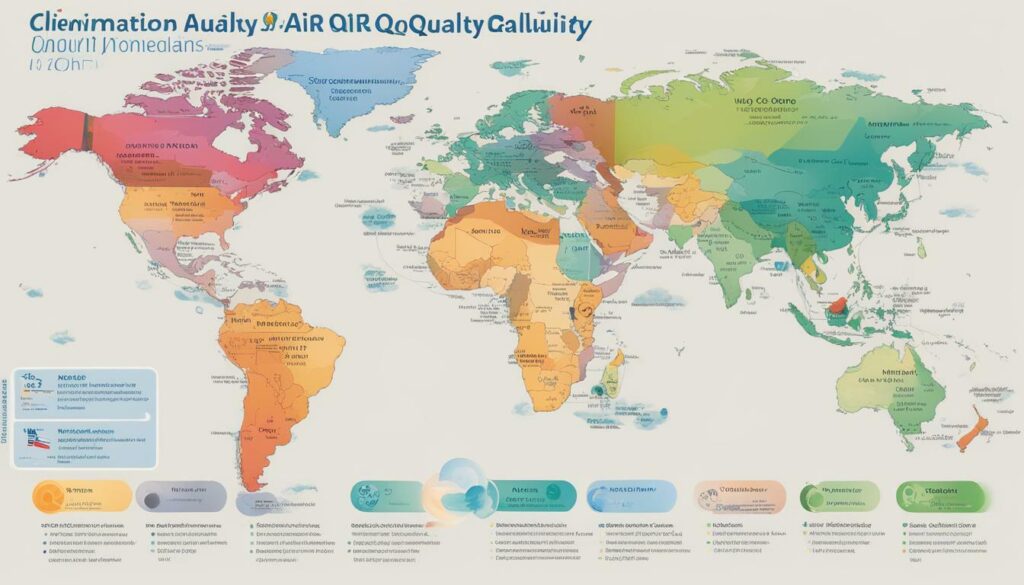

Tips for Reducing Your Risk
Air pollution can have serious effects on your health, both indoors and outdoors. Here are some practical tips for reducing your risk:
- Indoor air quality: Keep your home well-ventilated and avoid smoking indoors. Consider using an air purifier to remove pollutants from the air.
- Outdoor air quality: Stay informed about air quality alerts in your area and try to avoid outdoor activities during times of high pollution. Use public transportation or carpool when possible to reduce emissions.
It’s also important to be aware of the potential health risks associated with air pollution. Poor air quality can cause respiratory problems, cardiovascular disease, and other serious health issues. Taking steps to reduce your risk can help protect your health and improve your overall quality of life.


The Role of Community Action
As you have learned, air pollution concerns have serious effects on poor air quality, and it is up to all of us to take action. The power of community involvement and advocacy cannot be overstated. By banding together, individuals can drive positive change and demand cleaner air in their neighborhoods and cities.
There are many ways to get involved in community action for air quality. You can start by seeking out local organizations that advocate for clean air and join their efforts. Attending local government meetings and voicing your concerns can also make a difference. Additionally, you can work with community leaders to promote sustainable practices that reduce air pollution, such as implementing bike-sharing programs and encouraging the use of electric vehicles.
It is important to recognize that individual choices also play a significant role in improving overall air quality. Choosing cleaner transportation options, such as walking, biking, or taking public transportation, can directly reduce air pollution. Additionally, reducing energy consumption at home and adopting sustainable practices such as recycling can also play a part in reducing air pollution.
By taking action and promoting awareness, community action can make a significant impact on air quality. We all have a responsibility to prioritize clean air for our own health and for the health of future generations.


The Future of Air Quality
Air pollution concerns have prompted the development of sophisticated air quality monitoring systems that provide real-time data to government agencies, researchers, and the public. With the advent of innovative sensing technologies and data analytics, air quality monitoring is becoming more efficient and affordable.
The future of air quality is focused on improving monitoring systems and reducing air pollution levels. The goal is to establish more comprehensive air quality standards that are universally recognized and enforced, to protect public health and the environment.


Advancements in air quality monitoring technologies have made it possible to detect and measure air pollutants on a smaller scale. Portable, wearable devices can now monitor air quality in specific locations, allowing for targeted interventions and real-time alerts. Coupled with machine learning tools, these devices can analyze air quality data and predict pollution levels in the future, enabling more proactive measures to be taken.
The future of air quality also involves investigating the correlation between indoor and outdoor air quality, as it has been found that indoor air quality can be just as harmful as outdoor air quality. As a result, there is a growing emphasis on improving indoor air quality and reducing the levels of indoor pollutants.
Overall, it is crucial for society to continue advocating for cleaner air and encouraging technological innovation to tackle air pollution. By raising awareness about air pollution concerns and supporting efforts to reduce pollution levels, we can help create a sustainable future with better air quality for all.
The Importance of Advocacy and Awareness
Now that you are aware of the air pollution concerns and the effects of poor air quality, it’s time to take action. Advocacy and awareness play a vital role in driving positive change and creating a healthier environment.
Firstly, it’s essential to educate yourself and those around you about the dangers of air pollution. By sharing information with family, friends, and colleagues, you can help raise awareness about the impact of poor air quality on our health and the environment.
Another critical aspect of advocacy is supporting policy initiatives that promote cleaner air. You can write to your local representatives or participate in public campaigns to demand sustainable practices and reduce air pollution levels.
Individual actions also play a significant role. Simple steps like choosing public transportation, carpooling, or biking instead of driving a car can significantly reduce air pollution levels.
Finally, it’s crucial to support organizations and groups that advocate for cleaner air. By donating or volunteering your time, you can contribute to the efforts to reduce air pollution levels and protect our health and the environment.


By working together and raising awareness about the impact of poor air quality, we can make a real difference in creating a healthier environment for ourselves and future generations. Take action today to prioritize clean air and become an advocate for a better tomorrow.
Conclusion
Congratulations on taking the first step towards understanding and prioritizing air quality. You now have a basic understanding of air quality, the health risks associated with poor air quality, and the measuring and monitoring systems used to evaluate air quality. Additionally, you have learned about the various sources and dangers of air pollution, and the importance of community action and advocacy in addressing air pollution concerns.
It is essential to remember that everyone has a role to play in reducing air pollution and improving overall air quality. By implementing the tips and strategies outlined in this article, such as improving indoor air quality and reducing exposure to outdoor air pollution, you can help protect yourself and your community from the health risks associated with poor air quality.
Moreover, it’s crucial to stay informed and up-to-date on air quality alerts and governmental regulations. You can also consider advocating for cleaner air and promoting sustainable practices in your community. With collective action and advocacy, we can drive positive change and improve air quality for everyone.
Remember:
Every breath you take matters. So, take charge of your air quality and prioritize clean air for a healthier, happier, and sustainable future.
FAQ
Q: How worried should I be about air quality?
A: It is important to be aware of air quality and its potential impact on health. Poor air quality, particularly from air pollution, can have adverse effects on respiratory and cardiovascular health. Monitoring air quality and taking steps to reduce exposure to pollutants can help mitigate risks.
Q: What is the air quality index?
A: The air quality index is a system that measures and reports the level of air pollution in a given area. It provides information about the concentration of pollutants, such as particulate matter and ozone, in the air. The index is often color-coded or classified into categories, ranging from good to hazardous, to help individuals understand the air quality conditions.
Q: What are the health risks from air pollution?
A: Air pollution can have various health risks, including respiratory issues, cardiovascular problems, and overall well-being. Prolonged exposure to pollutants can lead to the development or worsening of conditions such as asthma, bronchitis, and heart disease. It is essential to take measures to reduce exposure and maintain good indoor and outdoor air quality.
Q: How is air quality measured?
A: Air quality is measured using various techniques and technologies. Monitoring systems, such as stationary monitors and wearable devices, collect data on pollutants in the air. These measurements are often combined to generate an air quality index that indicates the level of pollution. Real-time data is crucial for understanding current conditions and taking appropriate action.
Q: What are air quality standards?
A: Air quality standards are guidelines set by governmental organizations and regulatory bodies to protect public health and the environment. These standards establish limits for the allowable concentration of pollutants in the air. Compliance with these standards is crucial for maintaining healthier air and reducing the risks associated with poor air quality.
Q: How can I reduce my risk from poor air quality?
A: There are several steps you can take to reduce your risk from poor air quality. Improving indoor air quality by using air purifiers, minimizing exposure to indoor pollutants, and ensuring proper ventilation is essential. Minimizing exposure to outdoor air pollution can be achieved by staying informed about air quality alerts, reducing time spent in heavily polluted areas, and using protective measures like masks when necessary.
Q: What role does community action play in addressing air pollution concerns?
A: Community involvement is crucial in addressing air pollution concerns. Collective action and advocacy can drive demand for cleaner air and promote sustainable practices. Engaging in individual choices, such as opting for cleaner transportation options, can also contribute to improving overall air quality. Together, these efforts can make a significant impact on reducing air pollution and creating healthier communities.
Q: What is the future of air quality?
A: The future of air quality involves advancements in technologies and innovations in monitoring systems. Emerging technologies can provide more accurate and real-time data on air quality, allowing for better decision-making and prompt actions. Ongoing efforts to combat air pollution and raise awareness about its impact are expected to drive positive change in the coming years.
Q: Why is advocacy and awareness important in addressing air pollution concerns?
A: Advocacy and awareness play a crucial role in addressing air pollution concerns. By educating the public, running campaigns, and advocating for policy changes, individuals and organizations can raise awareness about the detrimental effects of poor air quality. This increased awareness can lead to collective actions and initiatives that aim to improve air quality and protect public health.


